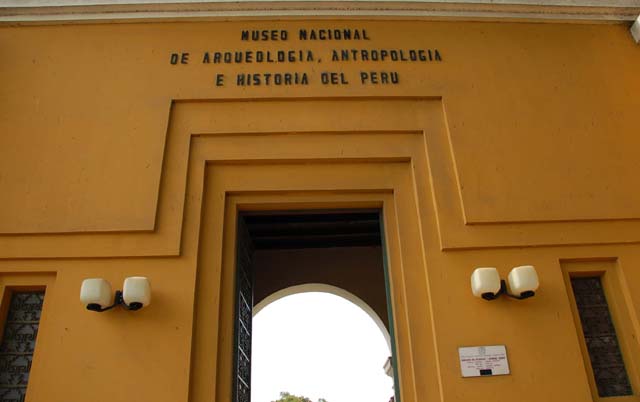
Along the Inca Road
Lima, Peru
March 23rd and 24th
Our return trip to Lima was uneventful. Airport security at the Iquitos airport meant we did not have to take our shoes off. That was a treat for many of us. The Jose Antonio Hotel was becoming a second home for us. We met the rest of our traveling companions and went to lunch to savor more delicious Peruvian cebiche.
March 23rd
After lunch we visited the Museo Nacional de Antropologia, Arqueologia y Historia del Peru. This is a small museum, by museum standards but the collection is unusual and covers the long history of Peru's cultures, some over 10,000 years old. Whether you subscribe to the theories of aliens having assisted ancient cultures in their building of monuments and cities there is sufficient evidence that the Americas were visited by peoples crossing the Atlantic and Pacific oceans thousands of years before the first europeans set foot in the Western Hemisphere.

Entrance to the museum
The collection of pre-Columbian artifacts is varied. Pottery and tools indicate a range of techniques used by earlier peoples and cultures. The geographic range of Peruvian societies begins in the norther portions of Peru new the present day border of Ecuador and goes as far south as Chile and Argentina. Early Peruvians worked with stone tools, had sophisticated ceramic skills and even practised cranial surgery. In addition, mummificatio was a common practise among many of Peru's early societies.

Cranial deformation or head binding was common among early Peruvian peoples. It is believed this practise was reservered for the nobility. In North America this practise was found among several tribes including the Choctaw,Che halis, and Nooksack Indians as well as the Flatheads. The Mayas also practice head flattening by strapping the infant's head to a cradleboard to slowly change the shape of the skull as the child developed.
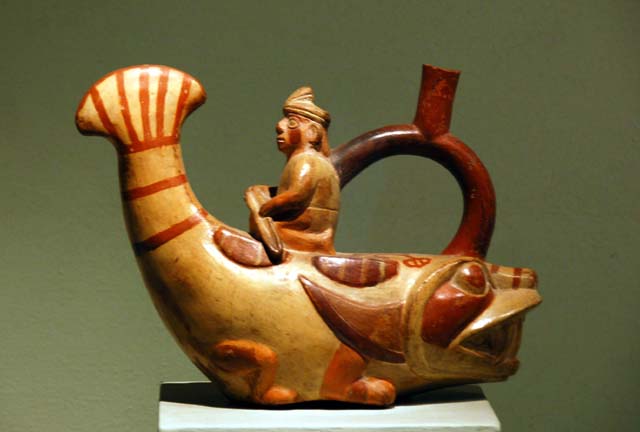
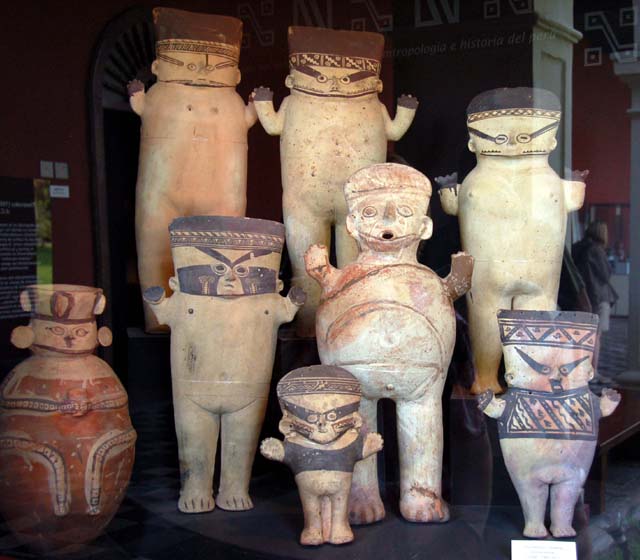
The ceramic works of early Peruvian cultures varies in style and technique. Some of these pieces are over 4,000 years old!
After our visit to the musuem we headed towards downtown Lima to see the Presidential Palace and visit the mummies of Lima.
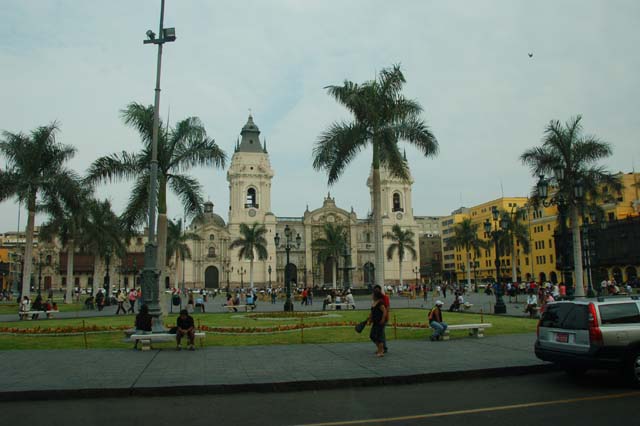
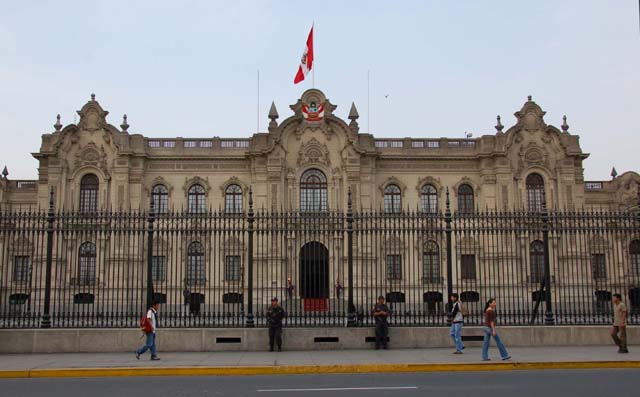
Lima's downtown plaza is surrounded by many historical buildings. Unfortunately, the Spanish, in their quest to spread the gospel, destroyed many Inca buidlings to recycle the rocks and stones for these more Christian edifices.
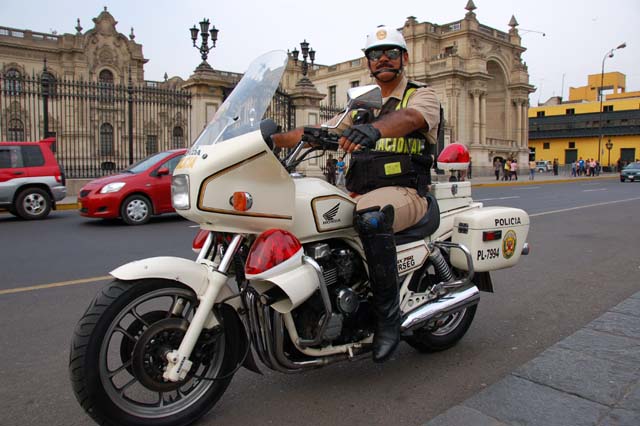
I had to take a picture of this national policeman on a Honda CBX six-cylinder motorcycle. Underneath all that official plastic was a very clean CBX.
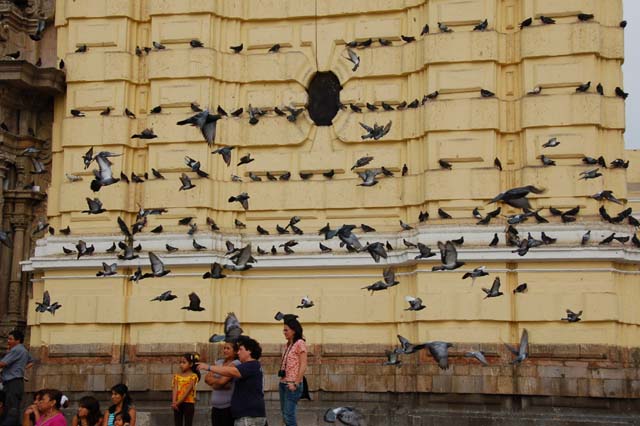
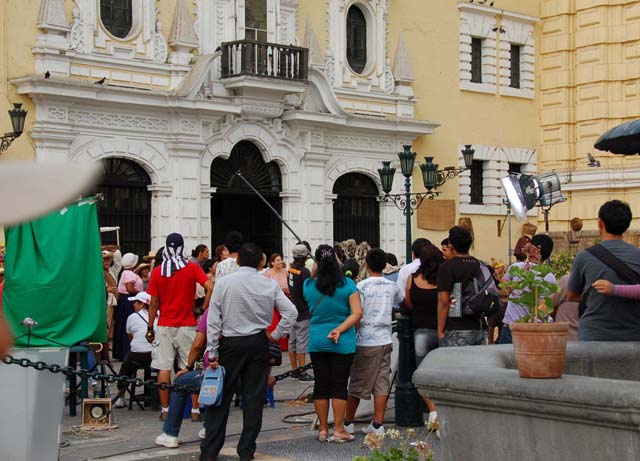
Our downtown walk took us to the Catedral de Lima. Next to it is found the Igelsia de San Francsico which was Lima's first cemetary. It is estimated the remains of over 75,000 people are kept in the catacombs under the church. On this day a telenovela was being taped, using the front of the church as a background.
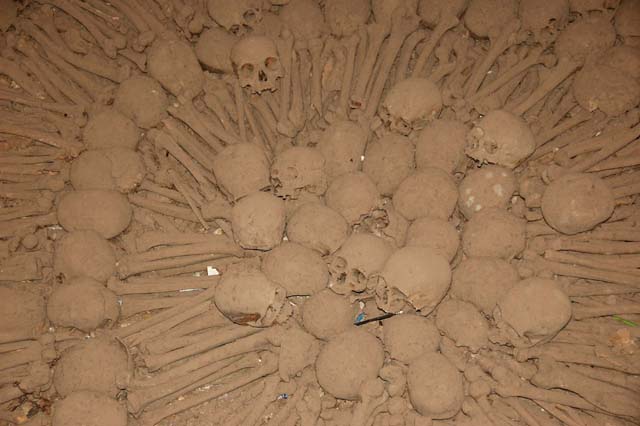
A few of the 75,000 still resting under the church.
March 24th
Joan and I decided to break away from the pack and explore by ourselves. The sights, sound and even smells of Lima are varied.
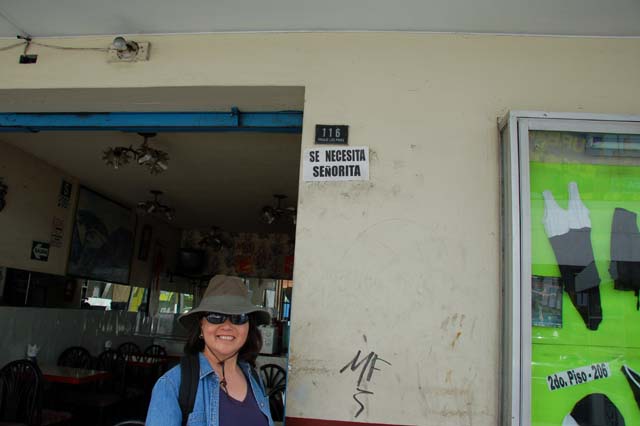
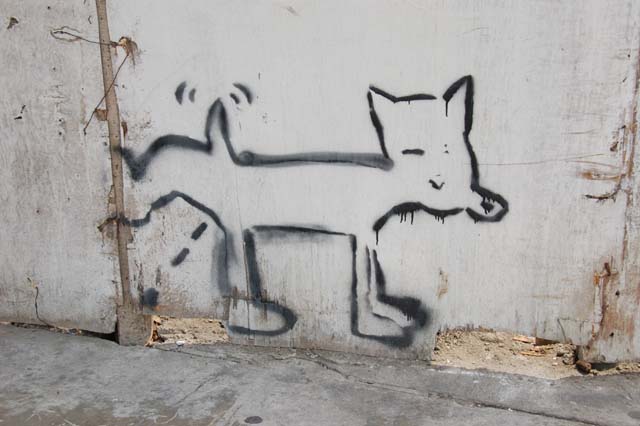
This Chifa or Chinese-Peruvian fusion restaurant needs a waitress. Street art is found throughout the Miraflores district, the area we were staying in.
After walking around the area we headed for the Huaca Pucllana pyramid. This area was used by the Lima culture between 200 to 700 A.D. They worshipped the sea and the location of this ceremonial site is within sight of the ocean. As is the case with many meso-american sites, this area had been covered with dirt by the Spanish and as Lima grew it was thought to be just a hill. Over time someone was digging in the area and discovered what was hidden under all the dirt. Instead of excavating to see more the locals dug up the bricks and rocks to use in their own homes. For some time dirt-bikers used the hills as well for information moto-cross courses.
In 1981 the site was designated an archeological site and since then work has been ongoing to uncover what remains of the site. it is thoght the remain structures are but 1/6th of the original complex. Even so, the remaining pyramid and ceremonial structures are impressive.
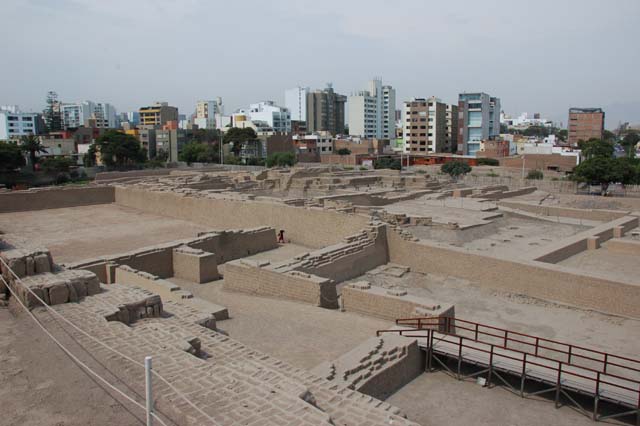
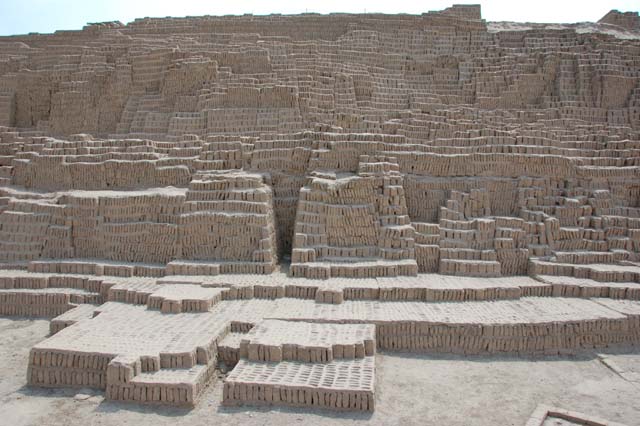
The site as it appears with modern Lima in the background. The bricks are hand-made and sun-dried. They are placed in vertical rows, much like books on a shelf. The random laying of the bricks, with gaps between the brick, was a technique used to keep the walls from collapsing during an earthquake. This type of construction allows the wall to move with the earth during a quake.
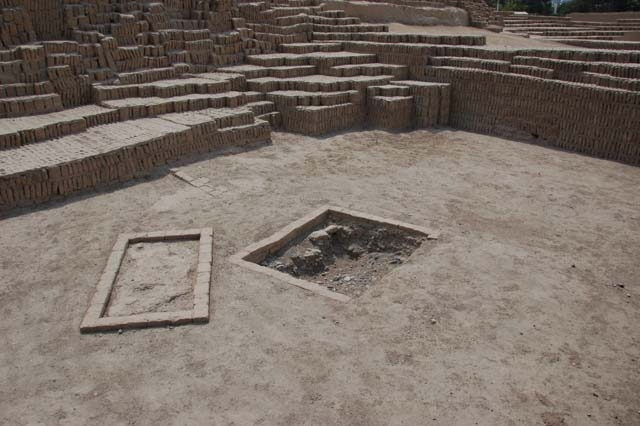
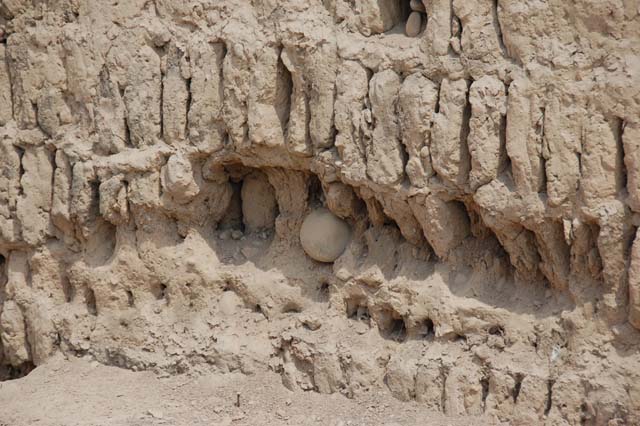
At the top of the pyramid a ceremonial pit was found. The remains of women have been found in these pits. It's not know whether the women were sacraficed or buried in these pits. In some areas rock are found embedded in the walls. Here the gaps between the bricks show how the Lima people used the air space as a way to absord the shocks of an earthquake.

The Peruvian Hairless dog was known during pre-Inca times and still survives today. This dog belongs to a member of the excavation crew at the site. He looked at us and went back to resuming his nap.
Our day and a half in Lima ended as we prepared to fly to Cusco. We were going to go from sea level to over 11,000 in one hour. Tomorrow would be a interesting day.
More Galván Trips & Travel Posts
Copyright 2011 Anthony Galván III